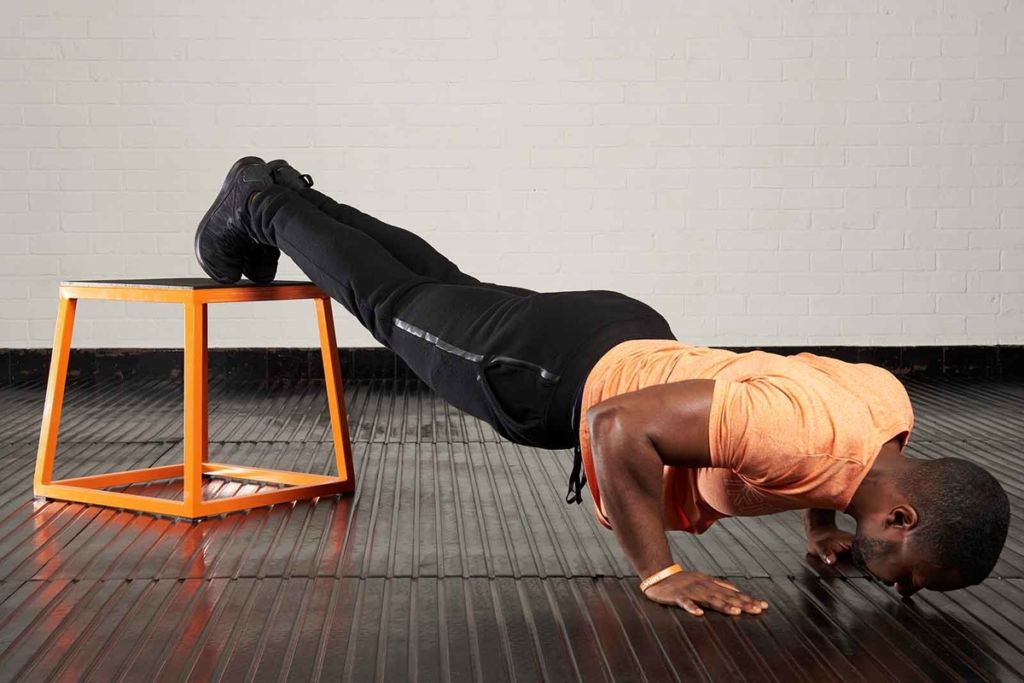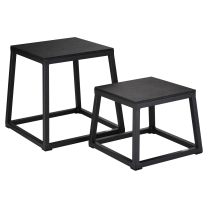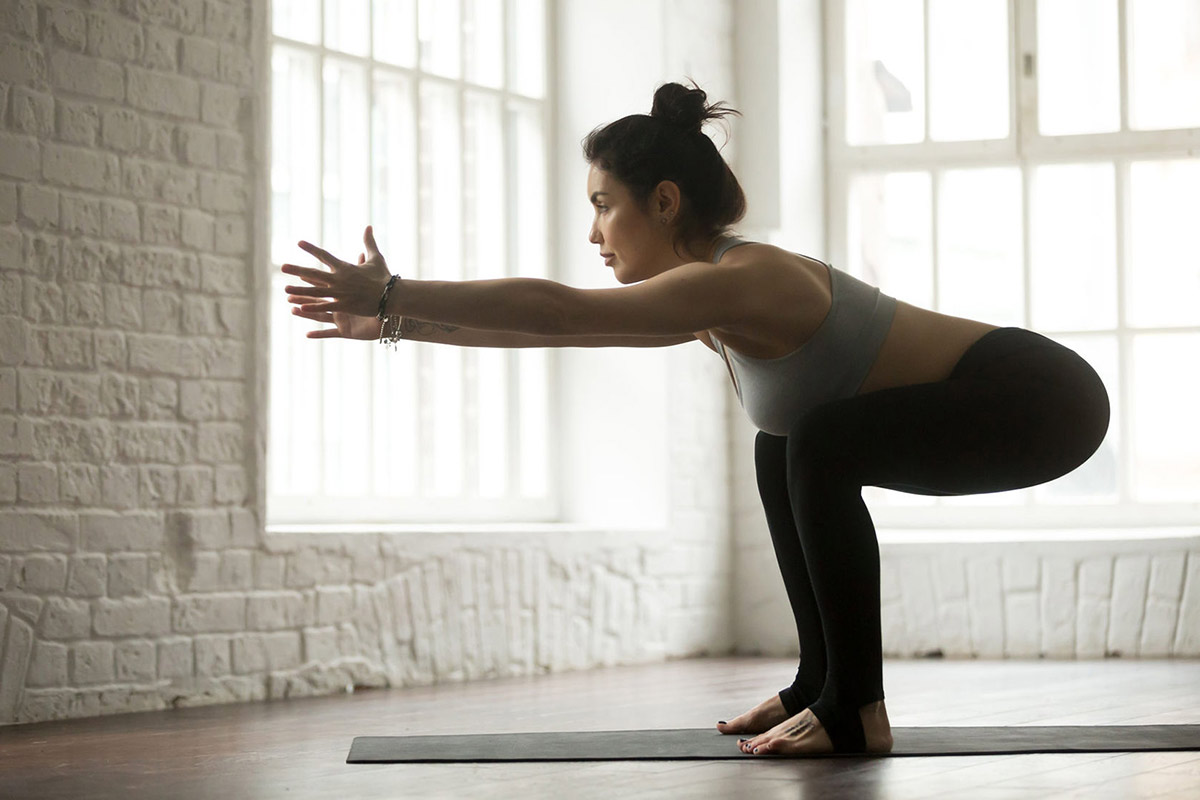24 Best Exercises Using A Plyo Box
24 Best Exercises Using A Plyo Box

One of the best ways to build strength and improve your functional fitness levels is by doing bodyweight exercises.
The only thing is, these types of exercises – known as callisthenics – can often be one of two things:
• Too hard - L-sits, planche push-ups and muscle-ups are all some of the most difficult exercises you can do and can take a long time to master.
• Not hard enough - it can be difficult to build muscle when you’re limited to air squats, planks and step-ups.
So, finding the middle ground can be tricky.
Plyo jump boxes are extremely versatile and are one of the best tools to build strength while just using your bodyweight.
And they’re not just for jumping on either. They can be used for a full range of upper and lower body strengthening exercises, as well as for cardio.
What is plyometric training?
Plyometric training refers to explosive-style exercises which are designed to help you increase speed and power.
They involve exerting a large amount of force onto your muscles, within a short amount of time and can include anything from jumping squats to jumping push-ups.
They’re more about conditioning as opposed to building muscle. However, doing this style of exercise is going to help supplement your heavy lifts and is really important for your overall fitness levels.
Doing plyometric exercises also helps to condition your nervous system, improves endurance levels and they’ll also get your heart rate really high.
How do I start plyometric training?
One of the best ways to start doing plyometric training is by incorporating a few exercises into your usual training routine.
You don’t need much equipment. In fact, all you need is a Plyo Box.
By having a plyo box at home, you can train regularly without the need for lots of space or an entire gym. You can also get a great cardio workout in without having to leave the house.
One of the key moves you will have seen people using a plyo jump box for is box jumps. These are simple jump ups onto the box.
They’re great for building strength and explosivity. However, if you don’t feel comfortable doing them, you can also start off with a step up and work your way up.
Plyo jump box exercises
We’ve put together a selection of the best 24 exercises you can do with just a Plyo Jump Box. Perfect if you’re planning on training at home or want to get in some extra cardio and endurance work.
The exercises include -
• Step-Ups
• Glute Bridges
• Incline Push-Ups
• Tricep Dips
• Toe Taps
• Incline Mountain Climbers
• Step Up Step Down
• Box Squat To Jump
• Knee Tucks
• Box Jumps
• Step Up With Hop
• Box Shuffle
• Bulgarian Split Squats
• Side To Side Sprawls
• Single-Leg Glute Bridge
• Tricep Push Up
• Jumping Bulgarian Split Squat
• Decline Dynamic Plank
• Elevated Single Leg Squats
• Lateral Jumps
• Burpee Box Jump
• Single-Leg Box Jump
• Pike Push Up
• Leap Frogs
These exercises are to give you a starting point with your plyo box. Plus, they show you just how versatile plyo boxes are and just how easily you can get a full body workout in with just one piece of equipment.
We’ve split them up by level of difficulty to help – especially if you’re new to exercise. However, if you already train, there’s nothing stopping you from making your way through all the levels!
Equally, pick and choose some of your favourites and then build up a bespoke circuit that works for you.
How to do a box jump
Doing box jumps is a great way to build strength and endurance as well as improve your explosivity.
But if you’re new to plyometric training, it’s only natural to feel a bit unsure as to how to get started.
Start by warming up and doing some dynamic stretches to make sure that you don’t injure yourself. You can get more information on the best warm up exercises to do here.
1 - Find a plyo jump box that’s a good height to get started with – nothing too high. A box that’s around 20” high is perfect for anyone new to plyometrics.
2 - Next, you want to concentrate on engaging your larger muscle groups to ensure you get as much push as possible. Squat down until you feel your glutes and hamstrings working.
3 - Swing your arms back and tighten your core as you bring your arms, knees and feet up all in one motion.
4 - Land in a deep squat position with your feet slightly turned out. Make sure your knees are bent to help soften the landing.
5 - Stand up straight while using your glutes and hamstrings to push you up – just like you would do when doing a squat. Your core should still be engaged.
6 - Finally, jump back down and land with your knees bent to help absorb the impact.
Which muscles do box jumps work?

Box jumps are Compound Exercises which means they work several muscle groups at the same time.
They work your -
• Hamstrings
• Quads
• Glutes
• Calves
• Core
• Hip flexors
And if you’re using your arms a lot to get up onto the box, you’ll also be using your biceps, triceps and delts. However, these are secondary muscles so you’re not working them as much as the muscles in your lower body.
When doing box jumps, it’s important to include some single leg plyometric training as well. This is because box jumps won’t help you work on any imbalances you have.
For example, many people have one side that’s stronger than the other.
So, by working on one side at a time, you can keep an eye on your weaker muscles and make sure that the stronger side isn’t carrying you through the exercise.
Plyo boxes can be used for a wide range of single-leg exercises including single-leg box jumps, as well as step-ups, single-leg squats and side step-ups – all of which you can include in your workout.
For more content, follow us on Instagram, YouTube, TikTok, and on our official Mirafit Facebook page.
Enter your email to signup to our newsletter
Tags: Equipment > Plyo Jump Box ; Exercise Type > Cardio ; Misc > Workout









